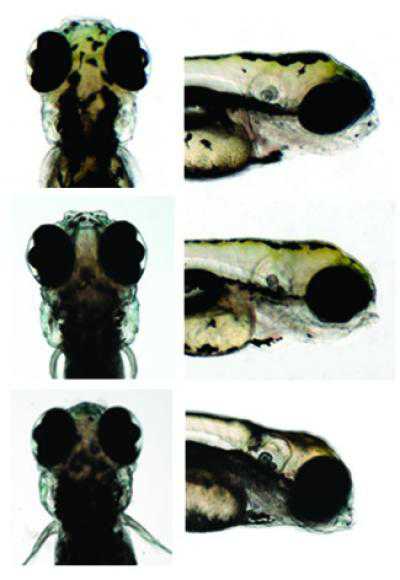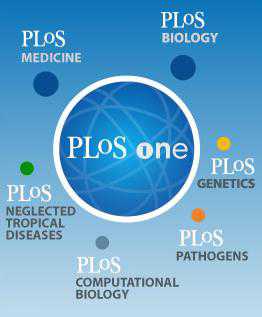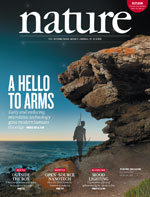ARCH GEN PSYCHIAT:交通相关空气污染或可致儿童孤独症
2012-11-29 ARCH GEN PSYCHIAT ARCH GEN PSYCHIAT
11月26日在线发表于《普通精神病学文献》杂志[Arch Gen Psychiatry. 2012;():1-7]的一项以人群为基础的病例对照研究显示,在母亲妊娠期和自身出生1年内,儿童暴露于交通相关的大气污染[如二氧化氮、直径<2.5 μm或<10μm 的悬浮微粒(PM2.5 或PM10)] 与罹患孤独症相关。 &n
进一步的流行病学和毒物学调查以了解可能的生物学路径,将有助于判断上述联系是否有因果关系。
研究纳入279例孤独症患儿及245名正常发育的对照组儿童。通过儿童出生证明上登记的母亲地址及居住史问卷中登记的地址,评估受试儿童在其母亲妊娠各阶段及自身出生后1年内的空气污染暴露情况。采用线源空气质量扩散模型,将交通相关空气污染进行分类。基于环境保护署的空气质量系统数据,进行区域性空气污染测定。
结果为,与对照组儿童相比,孤独症患儿更倾向于在母亲妊娠期[校正比值比(AOR)为1.98]和其出生后1 年(AOR 为3.10)内生活在交通相关空气污染为最高四分位的居住环境。在母亲妊娠期和出生后1年内检测的二氧化氮、PM2.5、PM10指标亦与孤独症相关,其中,母亲妊娠期暴露于上述3项指标与发生孤独症间的AOR分别为1.81、2.08和2.17,儿童出生后1年内暴露于上述3项指标与发生孤独症间的AOR分别为2.06、2.12和2.14。校正人口学及社会经济学变量后,上述地域性污染指标与孤独症间的相关性不发生改变。
北京大学第六医院贾美香教授点评
目前,孤独症是全球研究的热门话题之一,其发病率的快速增长已被越来越多的学者关注。现在,对于孤独症发病原因的研究越来越倾向于生物学、遗传、基因突变等因素。而导致基因突变的原因,也可能与环境因素密切相关。
众所周知,目前全球的大气污染较为严重,这也是导致许多疾病发病率逐年增长的原因之一。此外,物质环境对人体产生的影响也是不可忽视,例如,家庭污染(如室内装修)、辐射(如电脑、手机、大屏幕电视、微波炉)、噪音、病毒、药物、食物(尚残留农药)等。上述环境因素可导致年轻的父母出现婚后不孕、多次流产、死胎以及男性精子质量下降、女性排卵功能不畅等表现。这些均可造成儿童神经系统功能的异常,使其出现神经生理和精神心理方面的改变。
如今,社会在进步,科技在发展,人们的生活及工作节奏也在不断地加快。社会竞争激烈、人际关系复杂、工作压力大、物质需求高等引发的心理负担都会给人们的精神心理带来巨大的负面影响和损害。生活在矛盾中的年轻父母们,缺乏理解与沟通,很难及时排解精神心理上的不良情绪,带着这种亚健康的精神心理状态来孕育后代,就很难保障胚胎的健康发育。长此以往,父母的这种状态势必将影响到胎儿的神经系统发育,导致儿童精神心理疾病的产生。

Traffic-Related Air Pollution, Particulate Matter, and Autism
Context
Autism is a heterogeneous disorder with genetic and environmental factors likely contributing to its origins. Examination of hazardous pollutants has suggested the importance of air toxics in the etiology of autism, yet little research has examined its association with local levels of air pollution using residence-specific exposure assignments.
Objective
To examine the relationship between traffic-related air pollution, air quality, and autism.
Design
This population-based case-control study includes data obtained from children with autism and control children with typical development who were enrolled in the Childhood Autism Risks from Genetics and the Environment study in California. The mother's address from the birth certificate and addresses reported from a residential history questionnaire were used to estimate exposure for each trimester of pregnancy and first year of life. Traffic-related air pollution was assigned to each location using a line-source air-quality dispersion model. Regional air pollutant measures were based on the Environmental Protection Agency's Air Quality System data. Logistic regression models compared estimated and measured pollutant levels for children with autism and for control children with typical development.
Setting
Case-control study from California.
Participants
A total of 279 children with autism and a total of 245 control children with typical development.
Main Outcome Measures
Crude and multivariable adjusted odds ratios (AORs) for autism.
Results
Children with autism were more likely to live at residences that had the highest quartile of exposure to traffic-related air pollution, during gestation (AOR, 1.98 [95% CI, 1.20-3.31]) and during the first year of life (AOR, 3.10 [95% CI, 1.76-5.57]), compared with control children. Regional exposure measures of nitrogen dioxide and particulate matter less than 2.5 and 10 μm in diameter (PM2.5 and PM10) were also associated with autism during gestation (exposure to nitrogen dioxide: AOR, 1.81 [95% CI, 1.37-3.09]; exposure to PM2.5: AOR, 2.08 [95% CI, 1.93-2.25]; exposure to PM10: AOR, 2.17 [95% CI, 1.49-3.16) and during the first year of life (exposure to nitrogen dioxide: AOR, 2.06 [95% CI, 1.37-3.09]; exposure to PM2.5: AOR, 2.12 [95% CI, 1.45-3.10]; exposure to PM10: AOR, 2.14 [95% CI, 1.46-3.12]). All regional pollutant estimates were scaled to twice the standard deviation of the distribution for all pregnancy estimates.
Conclusions
Exposure to traffic-related air pollution, nitrogen dioxide, PM2.5, and PM10 during pregnancy and during the first year of life was associated with autism. Further epidemiological and toxicological examinations of likely biological pathways will help determine whether these associations are causal.
本网站所有内容来源注明为“梅斯医学”或“MedSci原创”的文字、图片和音视频资料,版权均属于梅斯医学所有。非经授权,任何媒体、网站或个人不得转载,授权转载时须注明来源为“梅斯医学”。其它来源的文章系转载文章,或“梅斯号”自媒体发布的文章,仅系出于传递更多信息之目的,本站仅负责审核内容合规,其内容不代表本站立场,本站不负责内容的准确性和版权。如果存在侵权、或不希望被转载的媒体或个人可与我们联系,我们将立即进行删除处理。
在此留言












#污染#
52
#交通#
51